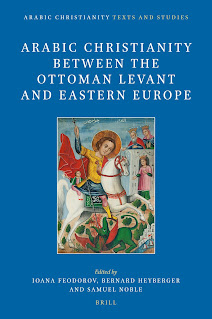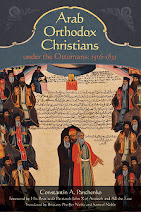While I’ve been limiting myself on this blog to translations of materials otherwise unavailable in English, I thought for a change I might try writing a couple book reviews. So, what’s written below is just my thoughts. Don’t take them too seriously…The Lost History of Christianity by Phillip JenkinsHarperOne 2008When I first saw that this book was coming out, I was pretty happy that a book on such a topic of Near Eastern Christianity was being released by a major publisher, though I was pretty doubtful that the book would accurately portray its subject matter. Jenkins, a professor at Penn State, has a background mostly in criminology, of all things, rather than religious studies or oriental languages, though his most successful books, such as
The Next Christendom, have been on the topic of ‘global Christianity’. The book at hand seems to be a continuation of the thesis of
The Next Christendom, which argues that Christianity’s center of gravity is moving towards Asia. (As with anything Spengler quotes too heavily from, take with a grain of salt!)
Lost Christianities, in turn, tries to argue that at one point Christianity’s center of gravity was in fact in Asia, mostly in the form of the (Nestorian) Church of the East- the modern-day Assyrians. The book then goes on to try and explain some of the character of Asian (and, sometimes randomly African or just non-Western) Christianity- a task at which the author miserably fails- and to document just how it declined and in many places disappeared-- a task at which the author does a very good and clear job. The startling impermanence of a given religion in a given place or culture is the overriding thesis of the book.
So first, a bit about the author’s failures. While reading, one can’t shake the strong suspicion that the author is an Episcopalian, which actually turns out to be the case- a convert from Catholicism to Episcopalianism, it seems. This type of background manifests itself in Jenkins’ constant use of the shopworn device of contrasting rigid, dogmatic western Christianity to whatever else is at hand that could be portrayed as flexible, open, vibrant, or whatever. Karen Armstrong, being part-stupid, uses Islam for this; Jenkins, it seems, has latched on to the Nestorians as a similar foil for the Western Church. This is a problematic device because it emphasizes the colorful aspects of the Nestorian missionary endeavor to a degree that it probably doesn’t deserve-- we have no real way of telling to what degree things like the ‘Jesus Sutras’ really played a serious role in Nestorian missionary activity, for example.
The exposition of church life in the oriental churches additionally suffers from the problem of not really defining what it means by oriental churches. Sometimes Jenkins seems to want to talk about all non-western churches as being representative of what he’s talking about and other times he seems to want to focus only on the Nestorians and Jacobites (that is, the Syriac Orthodox Church). This leads to contradictory attitudes towards the Orthodox Church in the Near East, as sometimes he associates it with Byzantine or even Papal oppression of ‘native’ Christians and sometimes he does recognize that the Orthodox Church in the region was just as native and Semitic as any the other churches (nowhere, however does he recognize the presence of Orthodox in Central Asia).
The strangely piecemeal details that Jenkins uses to try and give a picture for church life in the region is due, it seems, to the fact that he only reads English, at least only English-language sources are quoted from. Not knowing Syriac or Arabic is unfortunate but forgivable in a popular writer but not knowing French or German basically means that he shouldn’t have attempted the book; the vast majority of research on oriental Christianity has been done in French (especially in the period of Catholic missionary activity in the region from the XVIIth century to World War I) and so an inability to read French means an inability to utilize basic and very readable reference works like, well, basically anything written by the late Jean-Maurice Fiey.
All that said, the good-- in the second half of the book, Jenkins does an excellent job of concisely and clearly explaining why Christianity declined in Asia from the XIIIth century on. Of course, it’s a very easy explanation-- Islam. Well… and the Mongols… but only after the Mongols became Muslim. Jenkins shows an admirable lack of shyness about documenting just how relentlessly violent and oppressive Muslims have been to the native Christian population of the Near East. He is especially good when he talks about the Armenian Genocide / Sayfo and the genocide of Greeks in Asia Minor, events well covered by sources accessible to one with Jenkins’ training.
Also, one can hope that this book will, well, remind people about the continuing existence of Christians in the Middle East and the precariousness of their situation. The bibliography, though I criticized it above, is pretty good for listing the more accessible English-language works that one might want to go to as a non-specialist who wants to look deeper into the subject.








